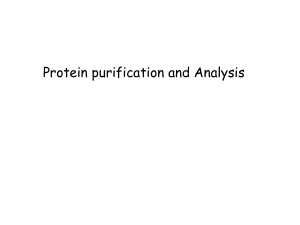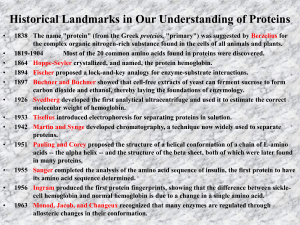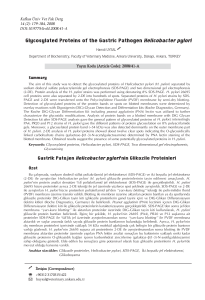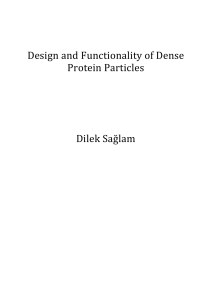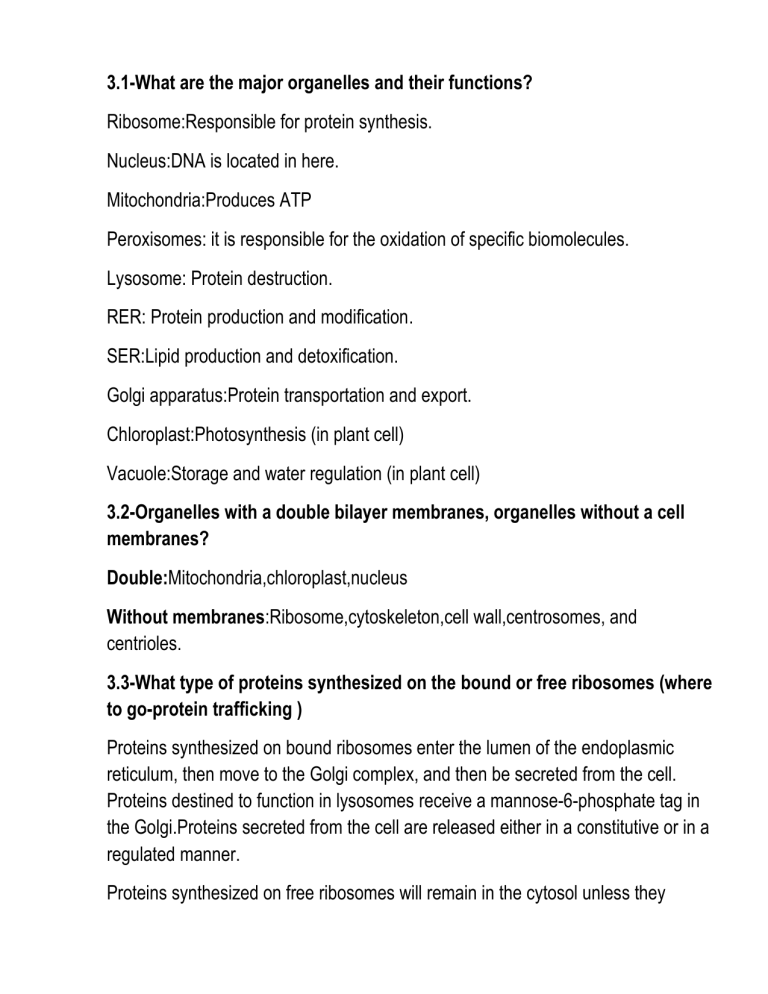
3.1-What are the major organelles and their functions? Ribosome:Responsible for protein synthesis. Nucleus:DNA is located in here. Mitochondria:Produces ATP Peroxisomes: it is responsible for the oxidation of specific biomolecules. Lysosome: Protein destruction. RER: Protein production and modification. SER:Lipid production and detoxification. Golgi apparatus:Protein transportation and export. Chloroplast:Photosynthesis (in plant cell) Vacuole:Storage and water regulation (in plant cell) 3.2-Organelles with a double bilayer membranes, organelles without a cell membranes? Double:Mitochondria,chloroplast,nucleus Without membranes:Ribosome,cytoskeleton,cell wall,centrosomes, and centrioles. 3.3-What type of proteins synthesized on the bound or free ribosomes (where to go-protein trafficking ) Proteins synthesized on bound ribosomes enter the lumen of the endoplasmic reticulum, then move to the Golgi complex, and then be secreted from the cell. Proteins destined to function in lysosomes receive a mannose-6-phosphate tag in the Golgi.Proteins secreted from the cell are released either in a constitutive or in a regulated manner. Proteins synthesized on free ribosomes will remain in the cytosol unless they contain a tag to direct them to the nucleus, mitochondria, or peroxisomes. 3.4-When Ribosomes bind to endoplasmic reticulum and when they remain free?What are the two types of secretions of proteins from the cells? Ribosomes remain free when proteins they are synthesizing lack a leader sequence. Enzymes and hormones are secreted. 3.5-Why the targeting and phosphorylation of lysosomal proteins are important?Examples of diseases? Phosphorylation is the critical event that removes lysosomal enzymes from the secretion pathway and directs them to lysosomes. Cystic fibrosis, sickle cell anemia, and Tay-Sachs disease.
